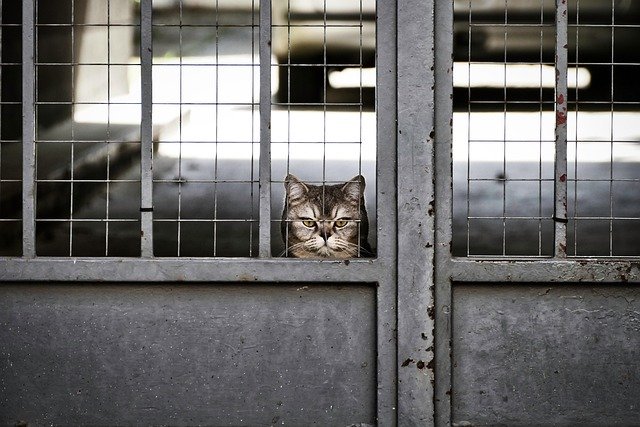Designing Compact Habitats for Indoor Birds and Small Mammals
Designing a compact habitat for indoor birds and small mammals requires balancing safety, stimulation, and practicality. Thoughtful layout, appropriate materials, and daily routines help birds, rabbits, hamsters, and other small pets thrive in limited space. This article outlines practical design principles, enrichment ideas, and care notes to support health and behavior in compact homes.

Creating a compact habitat for indoor birds and small mammals begins with identifying the species’ core needs and adapting the available space to meet them. Good design protects animals from household hazards, allows natural movement, and provides mental stimulation without occupying excessive floor area. Consider lighting, ventilation, substrate choices, and secure enclosures when converting a small corner, shelving unit, or dedicated cabinet into a safe living area. Even in compact settings, animals require daily interaction, supervised exercise time, and monitoring to maintain health and appropriate behavior.
Bird Enrichment in Compact Habitats
Birds housed in smaller enclosures benefit from vertical space, varied perching, and foraging challenges that promote activity and curiosity. Install perches at multiple heights and swap perch materials periodically to exercise different foot muscles. Foraging toys, puzzle feeders, and foraging boxes filled with safe food items encourage natural search behavior and reduce boredom. Rotate toys on a weekly basis rather than providing everything at once to keep interest high. Provide supervised out-of-cage time when possible, and avoid toxic plants or air fresheners near cages. Monitor for stress indicators such as feather picking, excessive screaming, or reduced appetite, and adjust enrichment accordingly.
Nutrition and Veterinary Care
Compact habitats do not change the nutritional needs of birds and small mammals: species-appropriate diets remain essential. Offer a balanced staple—pellets for many birds, formulated mixes for rodents, and high-fiber hay for rabbits—supplemented with fresh vegetables and safe fruits as appropriate. Clean water should be available at all times in spill-resistant containers. Maintain a relationship with a veterinarian experienced in avian or exotic/small mammal care for routine wellness checks, dental assessments (especially for rabbits and rodents), and any urgent health concerns. Keep records of feeding, weight trends, and stool quality to assist your veterinary provider in monitoring health.
Behavior and Training Strategies
Predictable routines and short training sessions support mental wellbeing when space limits free-roaming exercise. Use positive reinforcement techniques—treats, clicker training, or target-stick work—to teach handling behaviors and to provide cognitive enrichment. Small mammals often enjoy brief daily sessions that mimic natural foraging and exploration; birds benefit from structured training that strengthens bonding and reduces stress. Provide hiding spots and shelter within enclosures so animals can retreat if stressed. For social species, ensure appropriate companionship and follow careful introduction protocols to prevent aggression.
Grooming and Health Essentials
Regular grooming and hands-on checks are important in compact settings where close proximity can concentrate allergens or odors. Birds may need occasional nail trims, beak checks, and bathing opportunities; consult a qualified veterinary technician or veterinarian for trimming. Small mammals require regular fur checks, nail trims, and dental monitoring—overgrown teeth are a common issue in rabbits and rodents. Maintain clean substrates and litter areas to reduce ammonia buildup and respiratory risk. If you notice sneezing, discharge, weight loss, or reduced appetite, seek veterinary advice promptly. This article is for informational purposes only and should not be considered veterinary medical advice. Please consult a qualified veterinarian for personalized guidance and treatment.
Adoption, Rescue, and Shelter Advice
When adopting from a rescue or shelter, discuss space limitations and daily care needs with staff so you choose a pet suited to compact housing. Shelters can advise on temperament, past history, and specific enrichment needs. Some species and breeds adapt better to smaller footprints—for example, certain small parrot species or dwarf rodent breeds—while larger parrots, rabbits, or social ferrets typically require more space and daily exercise. Plan enclosure layout in advance and ensure you can meet veterinary, nutrition, grooming, and enrichment needs before completing an adoption.
Dog, Cat, and Reptile Considerations
If you share your home with a dog, cat, or reptile, prioritize separation and safety for small birds and mammals. Secure cages and habitats to prevent predation or stress from curious household companions—place enclosures out of reach, anchor them to reduce tipping risk, and use visual barriers if needed to reduce stress from constant visual contact. Reptile setups often require distinct temperature and humidity control; keep these units separate and avoid shared surfaces or litter that could spread parasites or pathogens. Coordinate multi-species concerns with local veterinary services experienced in mixed-companion households.
Designing compact habitats requires planning and ongoing attention to nutrition, grooming, training, behavior, and enrichment. Prioritize safety, provide species-appropriate stimulation, and maintain regular veterinary checkups and daily care routines to support the health and wellness of indoor birds and small mammals. With thoughtful choices and consistent care, many companion species can adapt to smaller living spaces while maintaining good quality of life.





